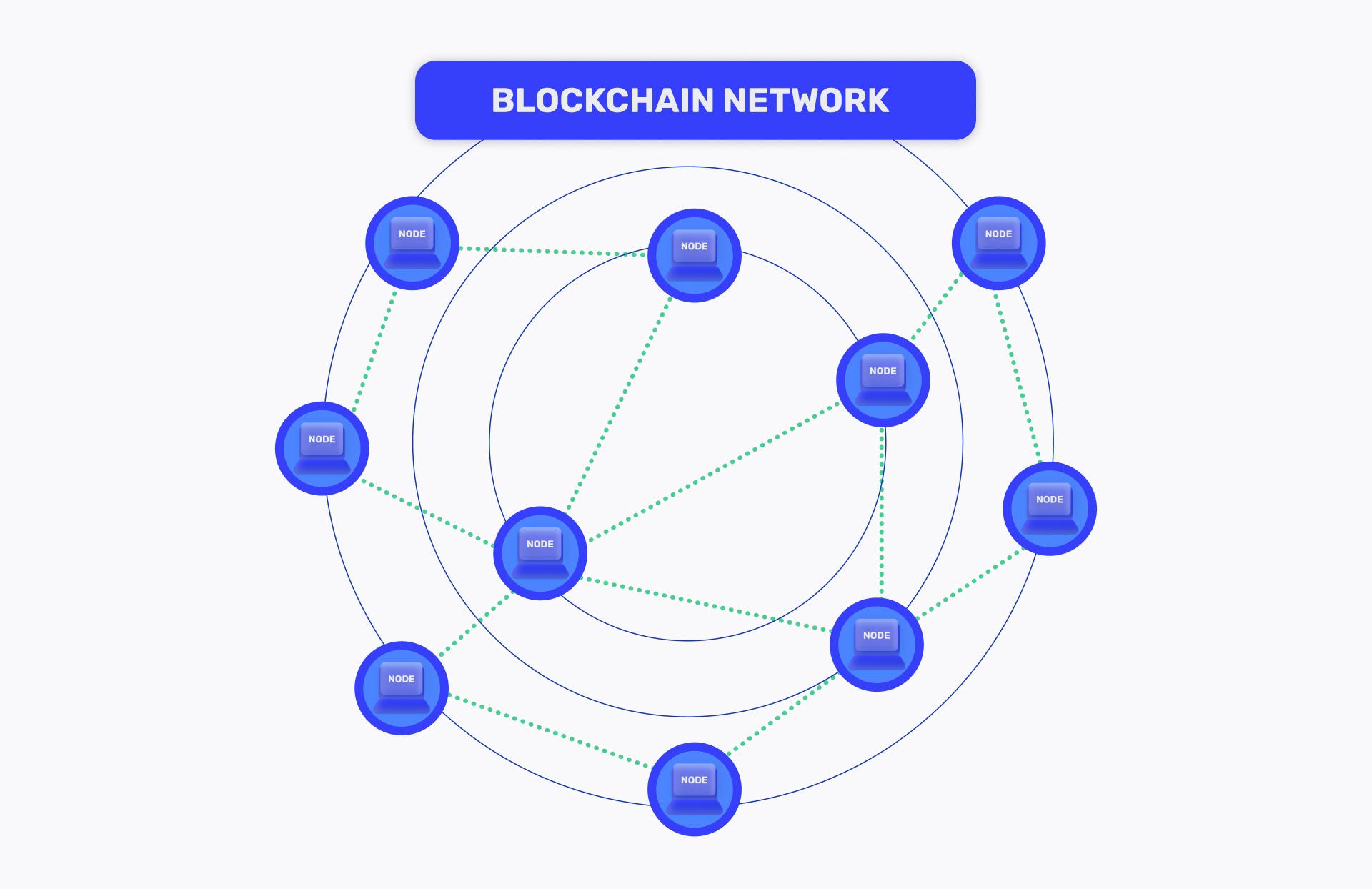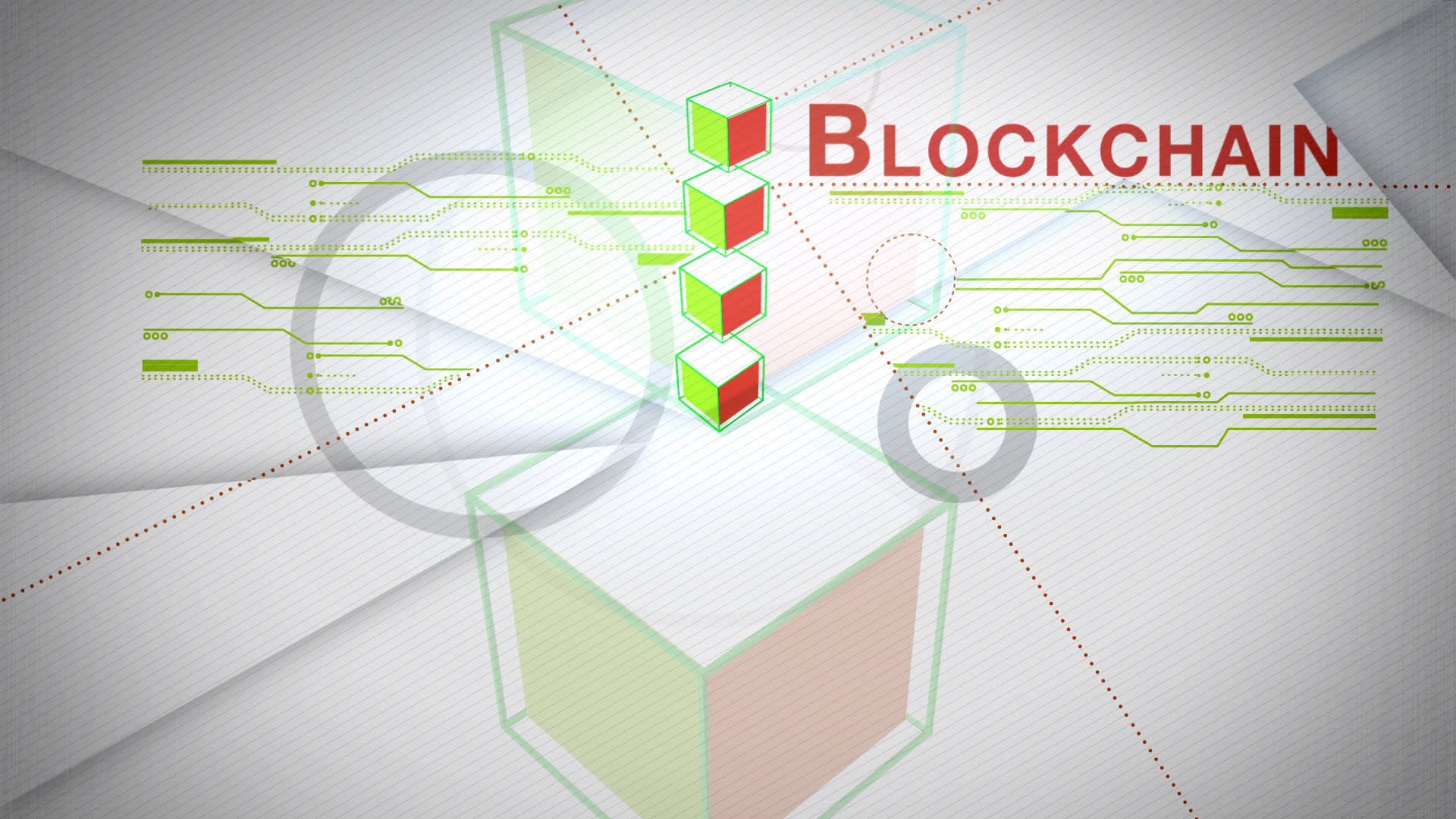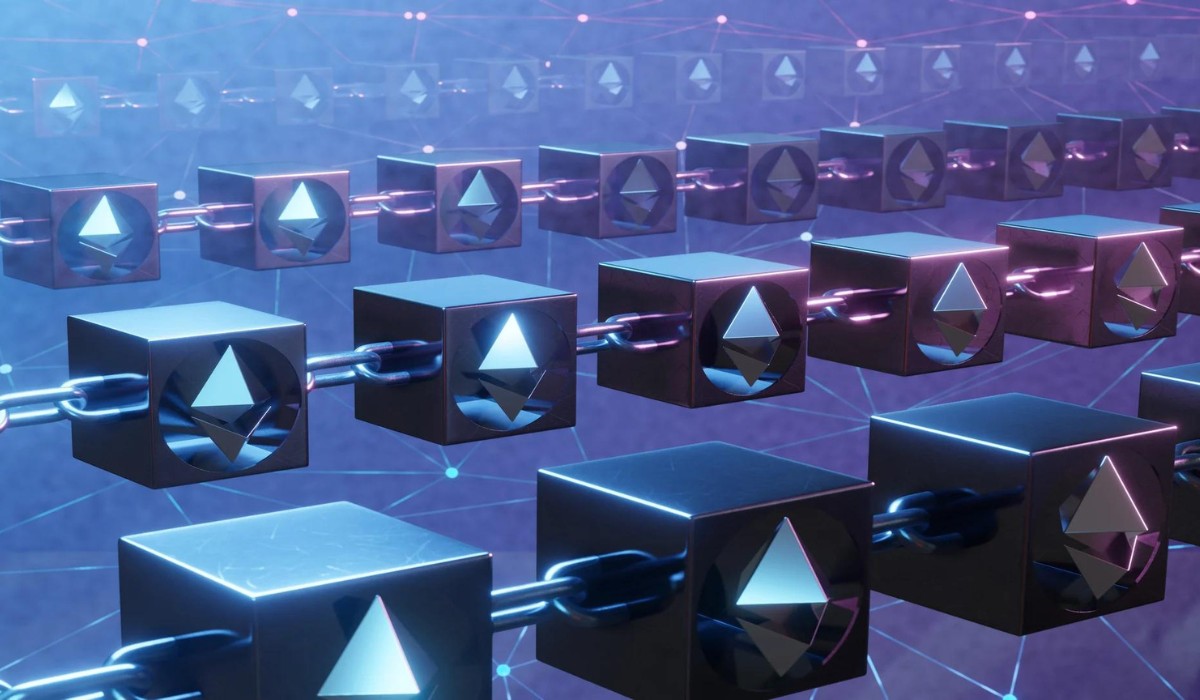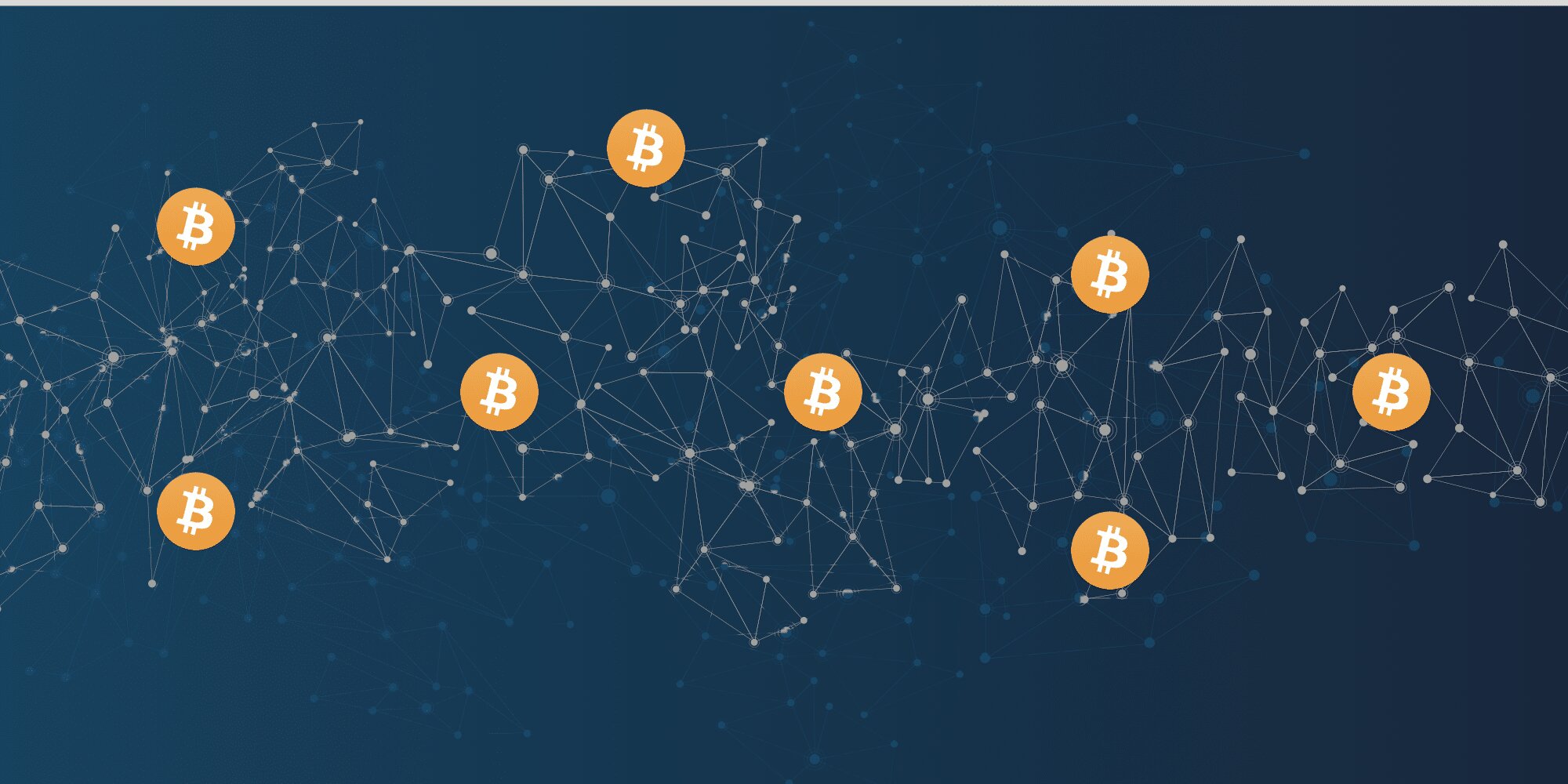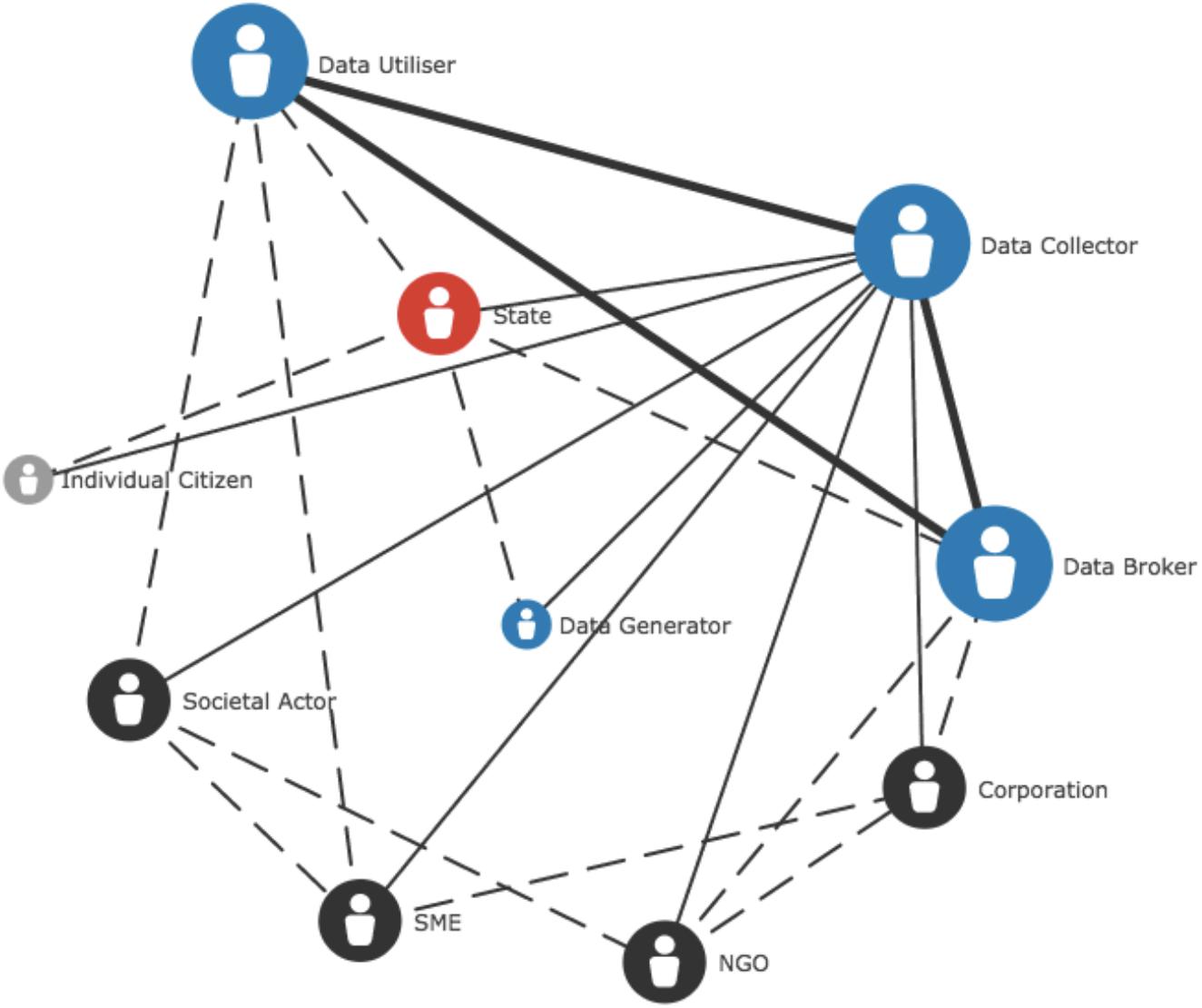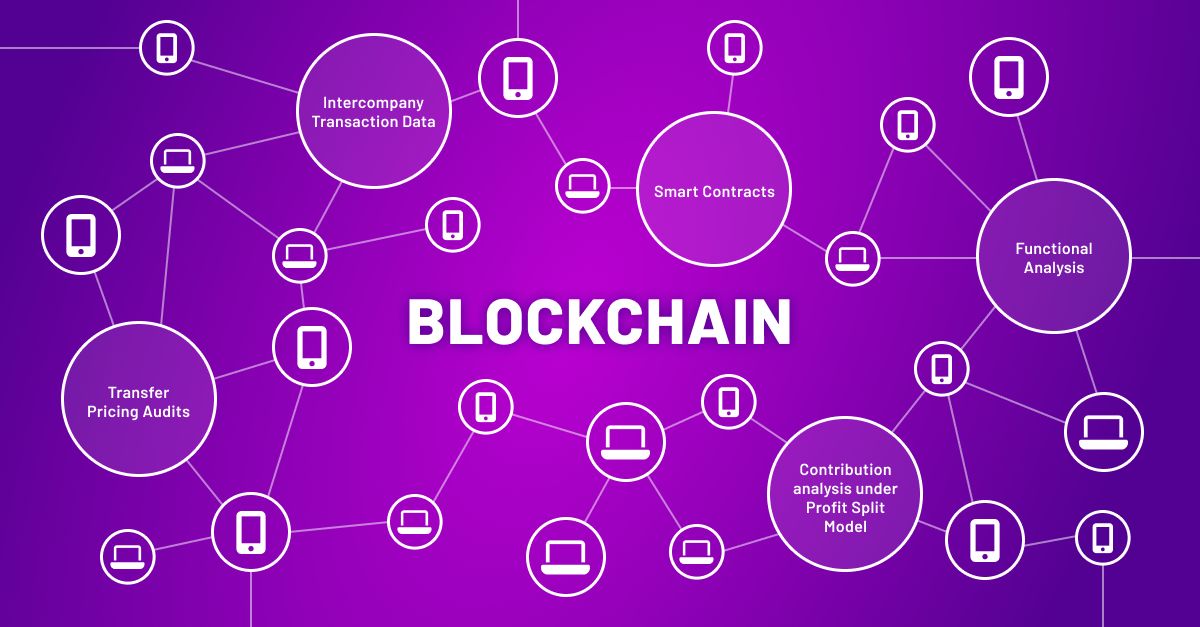Introduction
Welcome to the exciting world of blockchain technology! If you’ve been following the latest developments in the tech industry, you’ve likely come across the term “blockchain” numerous times. Blockchain, the decentralized and distributed ledger technology, is at the forefront of innovation in various industries.
At the heart of a blockchain network are nodes, the fundamental building blocks that maintain the integrity and security of the system. In this article, we will delve into the concept of nodes in blockchain and explore how you can create and contribute to this decentralized network.
Blockchain nodes are essentially computers or devices that participate in the blockchain network by communicating with other nodes and maintaining a copy of the blockchain. They play a vital role in validating transactions, storing data, and ensuring the consensus mechanism of the network.
Creating a node in blockchain can be a rewarding experience for various reasons. By running a node, you become an active participant in the network and contribute to its security and decentralization. Furthermore, you can engage in activities such as mining, staking, or developing decentralized applications (dApps) that interact with the blockchain.
This article will guide you through the process of creating a node, helping you understand the different types of nodes, the equipment required, and the step-by-step process to set up and configure your own node. By the end, you’ll have a clearer understanding of how blockchain nodes function and the impact they have on the overall blockchain ecosystem.
Whether you are a blockchain enthusiast exploring the technology or a developer looking to contribute to the blockchain network, creating a node can serve as a valuable learning experience. So, without further ado, let’s dive into the world of blockchain nodes and discover how you can get started!
What is a Node in Blockchain?
In the context of blockchain technology, a node refers to a computer or device that participates in a blockchain network. These nodes play a crucial role in maintaining the integrity and security of the blockchain. They collaborate and communicate with other nodes to validate transactions, store a copy of the blockchain, and ensure consensus among the participants.
A node serves as a building block of the blockchain network, enabling decentralization and trust within the system. Each node contains a complete copy of the blockchain, which includes all the transactions, smart contracts, and other data that make up the network’s history.
There are different types of nodes in a blockchain network, each with its own specific functions and responsibilities. Here are a few examples:
- Full Nodes: Full nodes are the backbone of the blockchain network. They maintain a complete copy of the blockchain and validate each transaction according to the protocol’s rules. Full nodes play a crucial role in maintaining the security and decentralization of the blockchain network.
- Mining Nodes: Mining nodes are specialized nodes that participate in the mining process to add new blocks to the blockchain. They perform complex computations to solve mathematical problems and validate transactions. Miners are rewarded with cryptocurrency tokens for their contribution to securing the network.
- Wallet Nodes: Wallet nodes enable users to interact with the blockchain network, send and receive transactions, and manage their cryptocurrency holdings. They do not participate in the validation process but rely on full nodes to verify transactions.
- Lightweight Nodes: Lightweight nodes, also known as SPV (Simplified Payment Verification) nodes, are designed to consume fewer resources compared to full nodes. They store only a subset of the blockchain and rely on full nodes for validating transactions.
These nodes work together to ensure the smooth operation and consensus of the blockchain network. They maintain a decentralized, immutable, and transparent ledger of transactions, making blockchain technology tamper-proof and secure.
In the next section, we will explore the various reasons why creating a node in a blockchain network can be a beneficial and rewarding endeavor.
Why Should I Create a Node?
If you’re interested in blockchain technology and want to actively participate in a blockchain network, creating a node can offer several benefits and opportunities. Here are some compelling reasons why you should consider creating your own blockchain node:
- Contributing to Decentralization: By creating a node, you become an integral part of the blockchain network’s infrastructure. Nodes help distribute and validate transactions, ensuring that no single entity has complete control over the network. Running a node contributes to the decentralization and resilience of the blockchain ecosystem, promoting its core principles.
- Enhancing Network Security: Nodes play a critical role in securing the blockchain network. When you create a node, you actively participate in the validation of transactions and the maintenance of the blockchain’s integrity. By verifying transactions and storing an up-to-date copy of the blockchain, nodes help prevent malicious activities, such as double-spending or unauthorized modifications to the ledger.
- Earning Rewards: Depending on the type of node and blockchain network, running a node can provide monetary rewards. For example, if you create a mining node in a proof-of-work blockchain, you may have the opportunity to mine new blocks and receive cryptocurrency rewards. Additionally, some blockchain networks offer staking rewards for nodes that hold and validate a certain amount of tokens.
- Engaging in Consensus Mechanisms: Blockchain networks rely on consensus mechanisms to agree on the state of the ledger. By running a node, you can actively participate in the consensus process, providing your computational power or stake to help the network reach consensus. This allows you to actively contribute to the decision-making process and influence the future direction of the blockchain.
- Developing Applications: Creating a node can open up opportunities for developing decentralized applications (dApps) or smart contracts that interact with the blockchain. By running a node, you gain access to the network’s data and functionality, enabling you to build innovative solutions on top of the blockchain technology.
Creating a node in a blockchain network enables you to actively engage with the technology, contribute to its security, and potentially earn rewards. Whether you’re a blockchain enthusiast, a developer, or someone interested in the future of decentralized systems, running a node offers a valuable and rewarding experience.
Now that you understand the advantages of creating a node, let’s explore the different types of nodes you can set up in a blockchain network.
Types of Nodes
In a blockchain network, there are various types of nodes, each serving different functions and playing specific roles. Understanding these different types of nodes can help you choose the most suitable one for your needs. Here are the common types of nodes found in blockchain networks:
- Full Nodes: Full nodes, also known as “validator nodes” or “network nodes,” maintain a complete copy of the blockchain. They store all the transaction history, smart contracts, and other data. Full nodes play a crucial role in the consensus process by validating each transaction and ensuring that they follow the network’s protocols. These nodes contribute to the network’s security and decentralization by participating in the verification and propagation of blocks.
- Mining Nodes: Mining nodes are specialized nodes that are responsible for mining new blocks in a proof-of-work consensus algorithm. They compete with other miners to solve complex mathematical puzzles and add new blocks to the blockchain. Mining nodes require significant computational power and energy resources to perform these calculations. In return for their mining efforts, these nodes are rewarded with cryptocurrency tokens.
- Pruning Nodes: Pruning nodes, also known as “archival nodes,” store a subset of the blockchain data rather than the entire blockchain history. They keep track of recent transactions and remove older transactions, reducing the storage requirements. Pruning nodes contribute to the network by offering faster synchronization and reducing the storage burden on the network participants.
- Lightweight Nodes: Lightweight nodes, also known as “SPV (Simplified Payment Verification) nodes,” maintain only a subset of the blockchain data. They do not store the entire blockchain but rely on full nodes to verify transactions. Lightweight nodes are designed for resource-constrained devices such as smartphones or IoT devices, enabling them to interact with the blockchain network without the need for significant storage or computational power.
- Wallet Nodes: Wallet nodes, as the name suggests, are designed to manage cryptocurrency wallets and interact with the blockchain network. They do not participate in the validation or propagation of transactions but rely on full nodes to verify the transactions and keep track of the balances. Wallet nodes allow users to send and receive transactions, check their account balance, and manage their holdings.
Each type of node plays a crucial role in the blockchain network, contributing to its overall security, decentralization, and efficiency. Depending on your goals and requirements, you can choose the type of node that aligns with your interests and resources.
Now that we have explored the different types of nodes, let’s move on to the next section, where we will discuss the prerequisites and equipment needed to create a node in a blockchain network.
Prerequisites and Equipment
Before you embark on creating a node in a blockchain network, there are certain prerequisites and equipment you’ll need to ensure a smooth and successful setup. Here are the key considerations:
1. Hardware Requirements: Running a blockchain node typically requires a computer or device with adequate processing power, memory, and storage capacity. The specific hardware requirements will depend on the blockchain network you intend to join. Some blockchain networks, such as Bitcoin, have high computational requirements and may require specialized mining equipment.
2. Operating System: Most blockchain networks support multiple operating systems, including Windows, MacOS, and Linux. Ensure that your chosen operating system is compatible with the blockchain software you plan to use.
3. Internet Connection: A stable and reliable internet connection is essential for your node to communicate with other nodes in the blockchain network. It’s recommended to have a broadband connection to ensure uninterrupted connectivity.
4. Blockchain Software: Depending on the blockchain network, you’ll need to download and install the appropriate blockchain software. This software will enable your node to connect to the network, validate transactions, and participate in the consensus process.
5. Storage: Blockchain networks require a significant amount of storage space to store the entire blockchain history. Ensure that you have sufficient storage capacity to store the blockchain data and handle future growth.
6. Power Backup: It’s advisable to have a reliable power backup system in place to prevent any disruptions in case of power outages. Uninterruptible power supply (UPS) units or generators can help maintain the operation of your node during such instances.
7. Security Measures: As you’ll be operating a node that interacts with the blockchain network, it’s crucial to prioritize security. Implement necessary security measures, such as firewall protection, antivirus software, and regularly updating your software to protect against potential risks and vulnerabilities.
8. Technical Knowledge: Creating and maintaining a blockchain node requires some technical knowledge. It’s beneficial to have a basic understanding of blockchain technology, computer networking, and software setup. However, there are plenty of resources and online guides available to help you through the process.
By ensuring you have the necessary equipment and fulfilling the prerequisites, you’ll be well-prepared to proceed with creating your node. In the next section, we will provide a step-by-step guide on how to create and configure a node in a blockchain network.
Step-by-step Guide to Creating a Node
Creating a node in a blockchain network requires following certain steps to successfully set up and configure your node. Here is a step-by-step guide to help you create your own blockchain node:
Step 1: Research and Choose a Blockchain: Research different blockchain networks and determine which one aligns with your interests and goals. Consider factors such as the consensus mechanism, community support, and development resources available.
Step 2: Select the Node Type: Based on your chosen blockchain, identify the type of node you want to create. Determine whether you want to run a full node, mining node, lightweight node, or any other type based on your objectives.
Step 3: Prepare the Required Hardware and Software: Ensure that you have the necessary hardware components, including a computer or device with sufficient processing power, memory, and storage. Download and install the relevant blockchain software for your chosen network.
Step 4: Install and Configure the Node Software: Follow the instructions provided by the blockchain network to install and configure the node software on your device. This typically involves downloading the software, setting up a wallet, and syncing with the blockchain network.
Step 5: Connect to the Network: Once the software is installed and configured, connect your node to the blockchain network. This may require providing network addresses, joining specific peer groups, or configuring network settings to connect to other nodes.
Step 6: Synchronize with the Blockchain: Allow your node to synchronize with the blockchain by downloading and verifying the entire blockchain history. This process can take some time, depending on the size of the blockchain and the speed of your internet connection.
Step 7: Participate in Consensus: Depending on the type of node you’re running, you may have the opportunity to participate in the consensus mechanism of the network. Follow the instructions provided by the blockchain network to contribute your computational power or stake to the consensus process.
Step 8: Maintain and Update Your Node: Regularly monitor and maintain your node to ensure optimal performance. Keep your software up to date with the latest releases, apply security patches, and perform necessary backups of your node’s data.
Step 9: Join the Community: Engage with the blockchain community and join forums, social media groups, or developer communities associated with your chosen blockchain network. This allows you to stay updated with the latest developments, seek support, and collaborate with other enthusiasts.
By following these step-by-step instructions, you’ll be well on your way to creating and configuring your own blockchain node. Remember to have patience, as the initial setup and synchronization process may take some time. Once your node is up and running, you can start actively participating in the network and exploring the opportunities it offers.
Now that you’ve successfully created your node, let’s move on to the next section where we will discuss how to configure your node and join a blockchain network.
Configuring the Node
After creating your blockchain node, the next step is to configure it to ensure optimal performance and participation in the network. Configuring your node involves adjusting various settings and parameters specific to the blockchain network you’re joining. Here are the key steps to configure your node:
1. Node Identity: Define a unique identity for your node. This usually involves generating a cryptographic key pair, consisting of a public key and a private key. The public key identifies your node on the network, while the private key is kept securely and used to authenticate your node’s actions.
2. Network Connection: Configure your node to connect to other nodes in the network. This involves specifying network addresses, ports, and peer discovery mechanisms to establish communication with other nodes. Joining the right peer group is crucial for participating in network consensus and receiving block and transaction information.
3. Block Verification: Each blockchain network has its own rules and protocols for verifying blocks and transactions. Configure your node to adhere to these rules and perform the necessary block validation processes. This ensures that your node is actively contributing to the security and integrity of the network.
4. Storage Management: Adjust the storage settings of your node to efficiently store the blockchain data. You may have options to specify the location and size limits of the blockchain storage. Applying appropriate storage management techniques allows your node to handle the growing size of the blockchain without overwhelming your system resources.
5. Network Bandwidth: Configure the bandwidth usage of your node to optimize network communication. Adjust settings such as the maximum number of concurrent connections and the rate at which your node sends and receives data. Effective bandwidth management ensures a stable and efficient network connection.
6. Security Measures: Implement necessary security measures to protect your node and the network from potential threats. Enable firewalls, encryption techniques, and secure access controls to safeguard against unauthorized access and malicious activities. Regularly update your node’s software and apply security patches to mitigate vulnerabilities.
7. Monitoring and Logging: Set up monitoring and logging mechanisms to track the performance and activities of your node. Configure logging levels and specify log file locations to help diagnose any issues that may arise. Monitoring your node helps ensure its proper functioning and allows you to take proactive measures in case of any anomalies.
8. Node Maintenance: Regularly maintain your node by checking for software updates, applying patches, and performing backups of important data. Stay updated with the latest developments and improvements in the blockchain network and adjust your node’s configuration accordingly to stay in sync with the network’s evolving protocols.
By carefully configuring your node, you can ensure its compatibility with the blockchain network and optimize its performance. Remember to consult the official documentation or seek guidance from the community to understand the specific configuration requirements of the blockchain network you’re joining.
Now that your node is properly configured, let’s explore how to join a blockchain network and contribute to the decentralized ecosystem in the next section.
Joining a Blockchain Network
Once you have created and configured your blockchain node, the next step is to join a blockchain network and become an active participant in the decentralized ecosystem. Joining a blockchain network involves connecting your node to other nodes in the network and contributing to the consensus and validation processes. Here are the steps to successfully join a blockchain network:
1. Network Selection: Choose the specific blockchain network you want to join. Research the available options and consider factors such as the network’s purpose, consensus mechanism, community support, and development activity.
2. Network Discovery: Discover nodes within the network to connect with. Most blockchain networks have official websites or forums that provide a list of active nodes or peer discovery mechanisms. Use these resources to find nodes that are reliable and trustworthy.
3. Establish Network Connections: Configure your node to establish connections with other nodes in the network. This may involve providing IP addresses, port numbers, or joining specific peer groups. By establishing connections, your node becomes part of the network and actively participates in the dissemination and verification of blocks and transactions.
4. Syncing with the Blockchain: Allow your node to sync with the blockchain network by downloading and verifying the entire blockchain history. This process can take some time, especially if the blockchain is large. Syncing ensures that your node has the most up-to-date version of the blockchain and can accurately validate transactions.
5. Consensus Participation: Depending on the consensus mechanism used by the blockchain network, you may have the opportunity to actively participate in the consensus process. Follow the guidelines and rules set by the network to lend your computational power, staked tokens, or voting rights to help reach consensus and validate transactions.
6. Contributing to the Network: Once your node is connected and synced with the blockchain network, you can actively contribute to the network’s goals and ecosystem. This can involve activities such as validating transactions, securing the network through mining or staking, participating in governance processes, or developing decentralized applications on top of the blockchain.
7. Network Engagement: Engage with the community surrounding the blockchain network. Join forums, social media groups, or attend meetups to stay updated with the latest developments, discuss ideas, seek support, or collaborate with other participants. By actively engaging, you can gain valuable insights, find new opportunities, and contribute to the network’s growth.
Joining a blockchain network allows you to become part of a global, decentralized ecosystem and contribute to its security, consensus, and development. Remember to stay informed about any network upgrades, consensus rule changes, or important announcements to ensure the smooth operation of your node within the network.
In the next section, we will explore the importance of maintaining and upgrading your blockchain node to ensure its optimal performance.
Maintaining and Upgrading the Node
After successfully joining a blockchain network, it is important to properly maintain and periodically upgrade your node to ensure its optimal performance and alignment with the evolving needs of the network. Regular maintenance and upgrades help safeguard the security, reliability, and efficiency of your node. Here are the key considerations for maintaining and upgrading your blockchain node:
1. Regular Monitoring: Monitor the performance of your node on an ongoing basis. Keep an eye on resource usage, such as CPU and memory utilization, to ensure your node is running smoothly. Use monitoring tools and perform periodic health checks to identify and address any potential issues.
2. Software Updates: Stay updated with the latest releases and updates of the blockchain software you are using. Frequently check for new versions, bug fixes, and security patches provided by the official developers. Applying timely updates helps keep your node compatible with network protocols and ensures it benefits from any improvements or bug fixes.
3. Security Measures: Maintain a robust security framework to protect your node and the blockchain network from potential threats. Regularly assess and update security measures such as firewalls, antivirus software, and encryption techniques. Implement best practices for securely storing your private keys and remain vigilant against potential cyberattacks.
4. Backups: Regularly back up your node’s data, including the blockchain database and any important configurations or key files. Backups serve as insurance against data loss, hardware failure, or unforeseen circumstances. Store backups in secure locations, preferably offline or encrypted, to safeguard against unauthorized access.
5. Performance Optimization: Continuously optimize the performance of your node by tuning various settings. Adjust parameters related to network connectivity, resource allocations, and caching mechanisms to ensure efficient operation. Regularly review and adjust configuration settings based on network requirements and the capabilities of your hardware.
6. Network Upgrades: Pay attention to network upgrades, protocol enhancements, or consensus rule changes that may occur in the blockchain network you have joined. Stay informed about upcoming network forks or network-wide upgrades and follow the recommended actions to ensure your node remains compatible with the updated network.
7. Community Engagement: Engage with the blockchain community and stay connected with other participants and developers. Participate in discussions, forums, and social media groups related to the blockchain network to learn about community-driven updates, best practices, and emerging trends. Engaging with the community can provide valuable insights and help you stay ahead of any necessary upgrades or enhancements.
By actively maintaining and upgrading your node, you contribute to the overall health and stability of the blockchain network. Your node becomes a reliable and trusted participant, ensuring the continued success and resilience of the ecosystem.
In the final section, we will summarize the importance of creating and maintaining a node in a blockchain network, and emphasize the potential future benefits and opportunities that it may bring.
Conclusion
Creating and maintaining a node in a blockchain network provides numerous benefits and opportunities for individuals interested in actively participating in the decentralized ecosystem. Being a node operator allows you to contribute to the network’s security, decentralization, and consensus, while also opening doors to exciting possibilities.
By creating a node, you become an integral part of the blockchain network, actively verifying transactions and storing a copy of the blockchain. You can contribute to the network’s security and decentralization, while potentially earning rewards for your participation. Running a node also allows you to engage with the consensus process and influence the network’s decision-making.
Joining a blockchain network requires careful configuration and connecting with other nodes. Once connected, you actively participate in the network, verifying transactions, securing the network, and even developing decentralized applications. Engaging with the blockchain community offers opportunities for collaboration, knowledge sharing, and staying informed about the latest developments.
Maintaining and upgrading your node is vital to ensure its optimal performance and alignment with the evolving needs of the network. Regularly monitoring, updating software, implementing security measures, and optimizing performance help guarantee the reliability and efficiency of your node.
Creating and maintaining a node in a blockchain network is more than just a technical endeavor. It’s an opportunity to be part of a global, decentralized ecosystem that is revolutionizing various industries. Whether you are a blockchain enthusiast, developer, or someone passionate about the potential of decentralized systems, running a node provides a valuable and rewarding experience.
As blockchain technology continues to evolve, the importance of running nodes will only increase. It allows you to actively contribute to the growth and security of the network while exploring new opportunities in the emerging decentralized economy.
So, if you’re ready to take your involvement in blockchain technology to the next level, creating and maintaining a node is a rewarding path to embrace. Start your journey today and become an active participant in the exciting world of blockchain networks!







